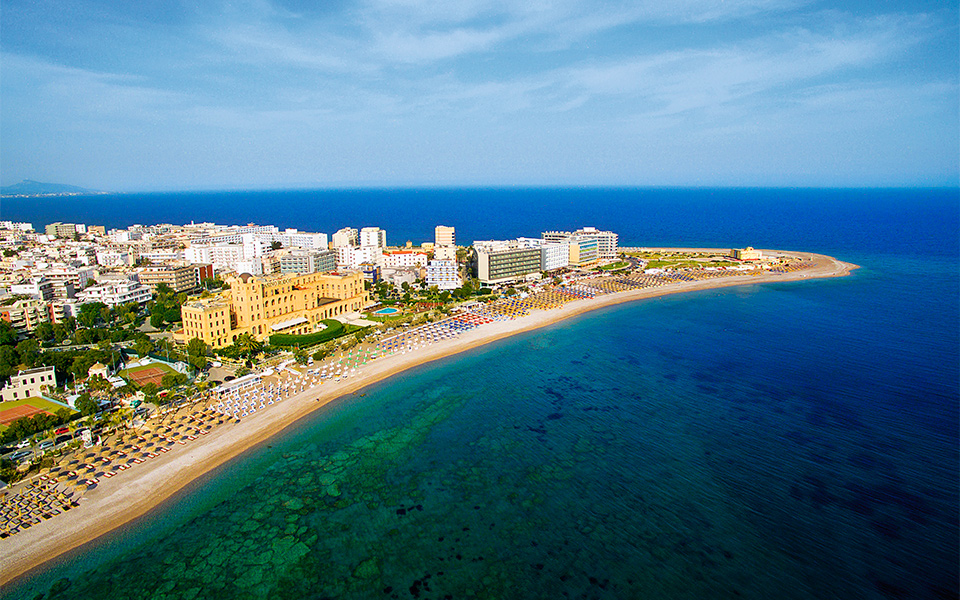Mandraki, perhaps the New Town’s most photographed spot, smells like sunscreen. The sun is at its zenith and the thermometer is hovering at 40ºC, yet none of the hundreds of tourists sunning themselves seems to care.
The foot traffic follows the contours of the coastline, making for interesting people-watching, and the sea is right there when the need for a refreshing dip arises. Many hold their phones aloft to snap their own postcard shots: of the two columns crowned by the bronze stags that are the symbol of Rhodes (some TripAdvisor users comment they expected them to be much bigger); of the fortress of Saint Nicholas; of the medieval windmills; and of the great bastion walls that separate the old and new chapters of the island’s history.
Meanwhile, in defiance of the frenzy of clicks, a street artist tries to pause time the old-fashioned way. He’s painting a small watercolor of the port with the castle in the background at the small easel he’s set up on the promenade. He’s also filtering reality, as there’s no sign in his painting of the huge yacht anchored beside the two smaller wooden sailboats he has included.
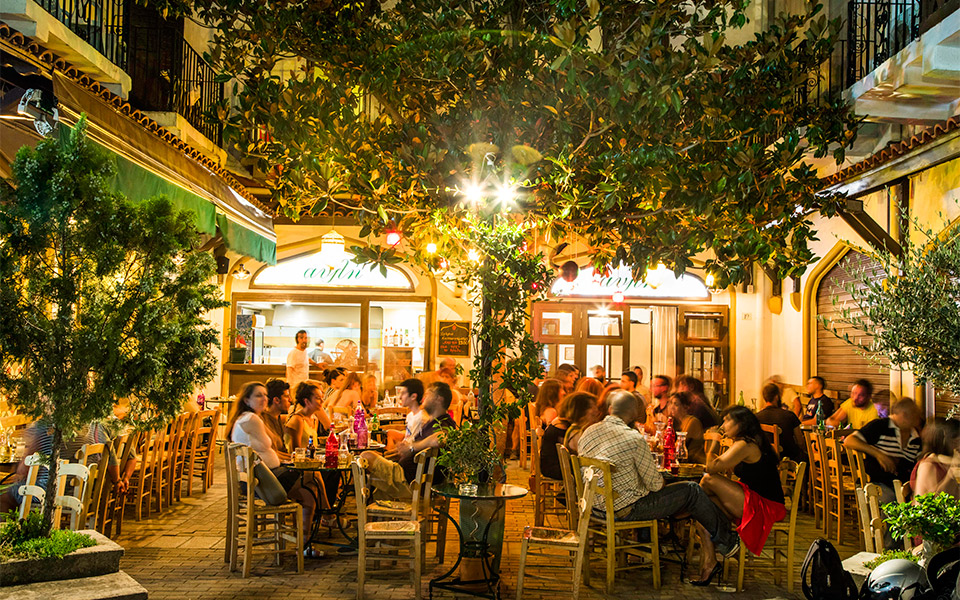
© Perikles Merakos
Rhodes’ New Town, this amazing combination of medieval battlements, eclectic 20th-century architecture, tall modern buildings, sandy beach and turquoise waters, has room for everyone. The settlement started growing outside the castle walls after 1522 when the Turks occupied Rhodes and threw all other nationalities out of the Old Town.
Today, what you see around you is indicative of just how busy things are: traditional caique fishing boats alongside luxury mega-yachts; bicycles darting around tour buses; a row of cheesy restaurants trying to attract business with garish photos of Greek salad and moussaka; barkers shouting for custom outside bars and cafés festooned with big bamboo armchairs.
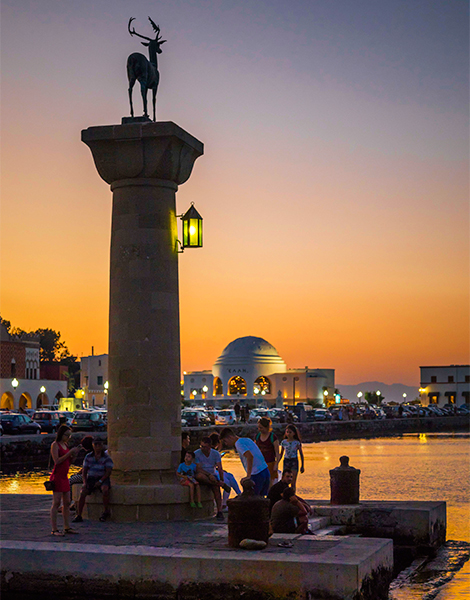
© Perikles Merakos
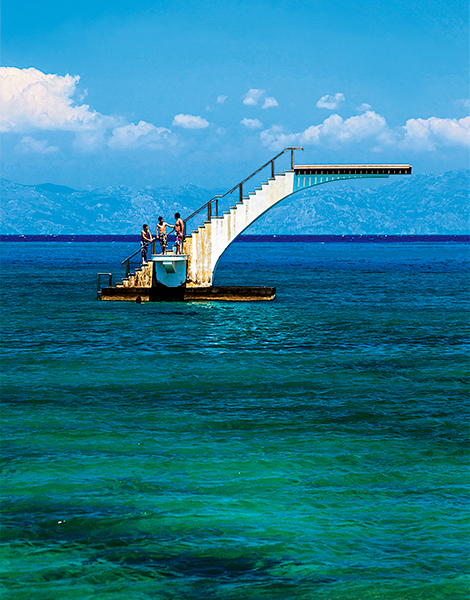
© Perikles Merakos
One of the establishments that stands out in this sprawl is the Aktaion, an officer’s club during the Italian occupation and now an attractive café and pastry shop with what is arguably the best shade in town: on the menu you’ll read about the enormous Ficus benjamina that has been growing in its courtyard since 1947.
I get a cup of orange juice – there are several spots along the beach that serve fresh fruit juices to go – and take a moment to examine Eleftherias (Liberty) Square, once the hub of new Rhodes as it was developed by the Italians and today an interesting spot to wait for your friends or your date.
Here is Evangelismos Church, a replica (built in 1925-29) of the Church of Saint John that once stood beside the Palace of the Grand Master. Inside the modern version, you can see murals painted by the celebrated Greek artist Photis Kontoglou and his students in the period between 1951 and 1961.
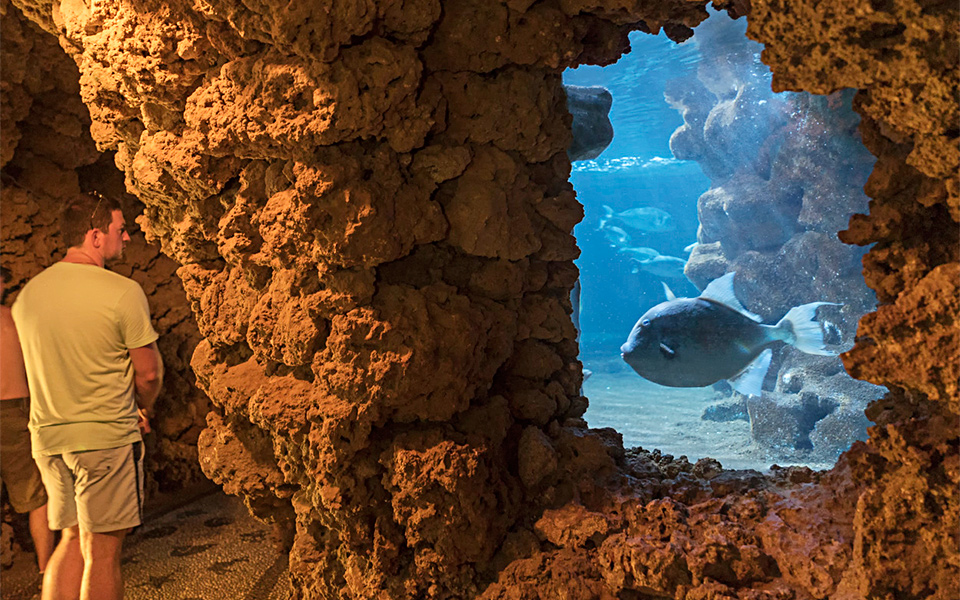
© Perikles Merakos
There aren’t many cities where the port authority, the regional authority offices and the post office are picture-worthy. Here, though, they are located in well-preserved eclectic mansions built by the Italians during the 1912-1943 occupation to house their administrative services.
Perhaps the most unusual of these Italian buildings is the one that today hosts the Aquarium. Built in 1934-1936 and standing on the island’s northernmost tip, it combines elements of vernacular and art deco architecture. It also has an amazing underground tunnel, added in the final year of construction.
“Nice to meet you,” a little girl tells a langoustine as I explore the exhibits. Walking around this dark, rocky labyrinth, you see tanks of all sizes holding species of fish and crustaceans, rare and common, most native to the Mediterranean but some which have emigrated here from the Indian and Pacific oceans.
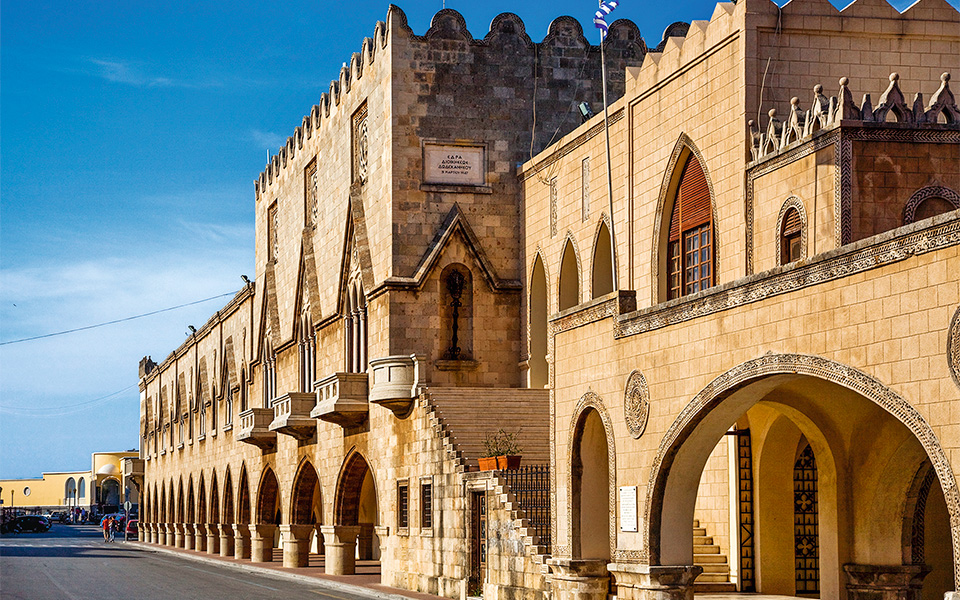
© Perikles Merakos
Back at street level, you can forego the mundane souvenirs being sold along the coastal strip and buy a portrait of yourself instead from one of the artists at Rimini Square. The half-hour sitting goes by in a flash, and they always capture the contentedness you feel sitting in the shade, listening to the song of the cicadas and looking up at the castle which, from this particular vantage point, is covered in a cascade of bougainvillea and other flowers.
Monte Smith, the hill that formed the acropolis of ancient Rhodes, is the perfect spot to enjoy the sunset. The hill is a protected archaeological site, so it has not been developed. This was not a fortified site in ancient times; instead, it served as a place for sanctuaries, temples, ancient public buildings and subterranean spaces of worship, and there are some impressive ruins to be seen. The benches dotted around afford romantic roosts for love birds of all ages, and there are beautiful views over the city and out to sea, stretching, on a clear day, all the way to the coast of Asia Minor.
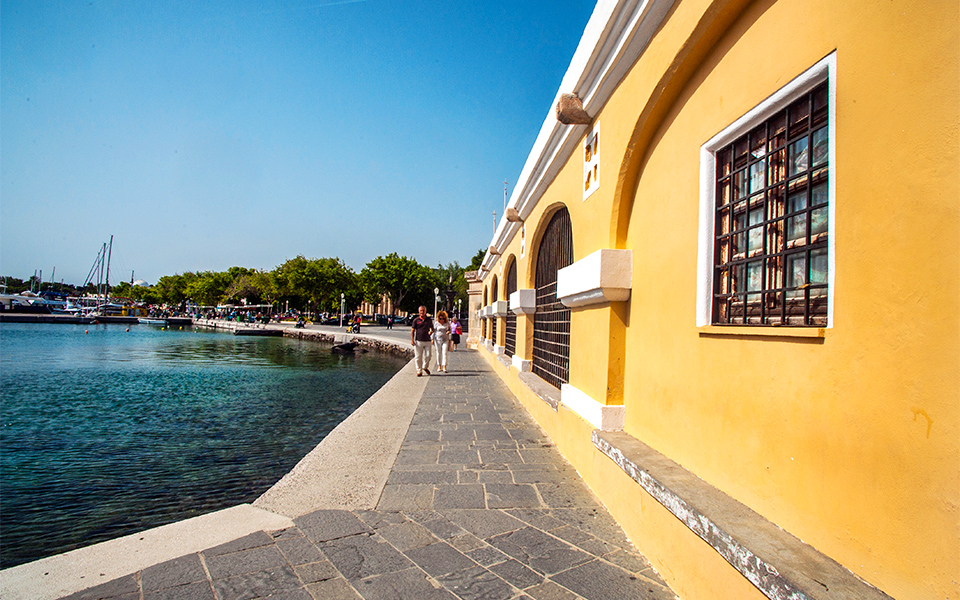
© Clairy Moustafellou
As soon as night falls, the city’s streets come awake with packed tables, inside and out, at its suddenly animated all-day bars. You can choose between the tourist joints where cocktails are served with the obligatory paper umbrella and pineapple slice, or the watering holes on the two pedestrianized roads where the locals have been gathering for the past two or three years: Kosti Palama Street for its pretty bars illuminated by small lanterns arranged across the branches of trees, or Theodoraki Street for the louder beat of house and dance music, and light shows.
Even though you hear them speaking English, German, Swedish, French and other foreign languages, when Greeks are out they tend not to mingle with the tourists – a surprising phenomenon in Rhodes, which has a reputation for its randy romeos (known in Greek as kamakia, meaning harpoons for the way they got girls) and mixed marriages.
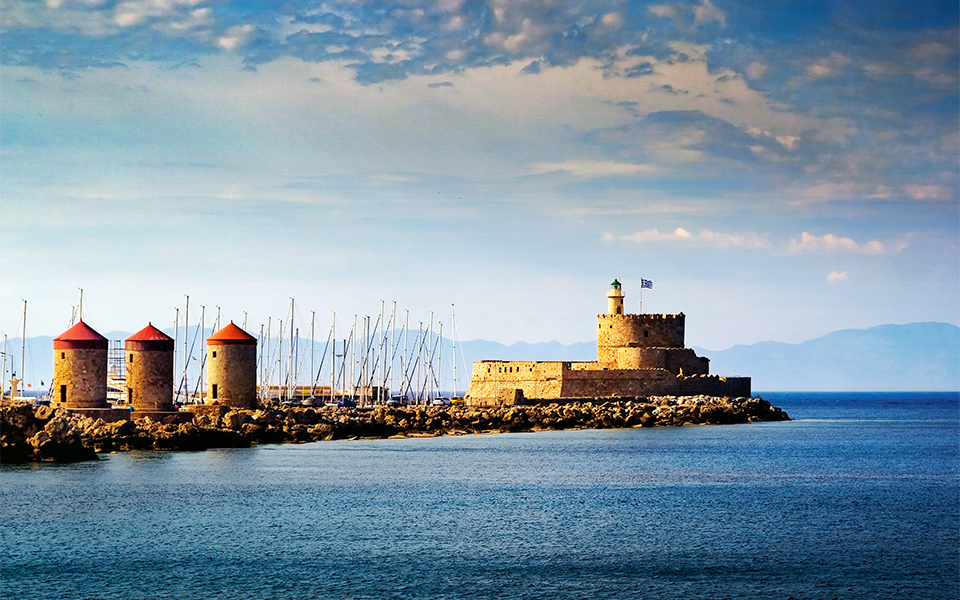
© Perikles Merakos
Back in the 1960s, when this was the island of the quick fling, the New Town was full of discos and young men would go out to pick up tourists, as Greek families were still quite conservative and did not allow the daughters out at night without a chaperone.
These young men tended to sport large sideburns, garish shirts open to their bellybuttons, flared jeans and belts with loud buckles. With their reputations riding on the number of women they’d “bag,” they had all sorts of strategies, including learning pick-up lines in different languages and finding ways to make an impression on the dance floor.
“The clubs would play a few disco songs and then a lot of slow songs. We’d spot the girl we wanted and then ask her to dance just before the program changed. We’d whisper in her ear: ‘Do you like Rhodes?’ Or ‘Want to go somewhere else after?’” says Yiannis, who experienced that era in full. “The kamakia helped tourism and we got a lot of repeat female visitors.”
The AIDS epidemic soon put a stop to all that. Today, the representatives of the age of free of love are in their 50s and 60s and look back fondly on those days of madness, romance and thrills that were like a window onto the rest of the world.
“Are there any kamakia left?” I ask him. “Only on Facebook!” he answers.

